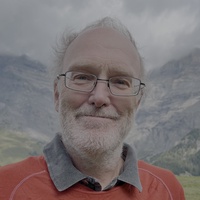
Emeritus Professor
- About
-
- School/Department
- School of Geosciences
Biography
Since August 2025 I am an emeritus professor at the University of Aberdeen, having "retired" from my position as Professor of Tectonics. Aberdeen was my final port of call in a career that began after education at the Universities of Leeds and Wales (Swansea) back in the mists of time. I went on to positions at Durham University and the Open University before moving back to my alma mater, Leeds, in 1991. I moved to Scotland and the University of Aberdeen in 2008. Most of my research (and publications) has dealt with contractional tectonics - evolution of mountain belts, thrust systems and basin inversion - chiefly integrating diverse geological information (especially stratigraphy) with structural geology, I continue to research the geology and tectonics of mountain belts and sedimentary basins, especially to understand the distribution and geological context of their earth resources.
I share knowledge through The Shear Zone - a YouTube Channel along with an associated website. There you'll find extensive open teaching materials, films about classic (and not so classic) geo-sites and "work-along" exercises in topics on geological interpretation and analysis - from seismic profiles through geological maps and cross-section construction.
External Memberships
Fellow of Geological Society of London - and Chartered Geologist
Member: Scottish Geology Trust, Italian Geological Society and European Geosciences Union.
Prizes and Awards
President's Award, Geological Society of London.
Awarded Wollaston Fund of GSL
Inaugural recipient o the Dewey Medal, GSL.
- Publications
-
Page 1 of 10 Results 1 to 10 of 99
Are geological description practices and classification schemes fit for future use? Breccias as an example
Earth Science Reviews, vol. 266, 105140Contributions to Journals: ArticlesMulti-layers: do incompetent horizons always act as thrust flats?
Journal of Structural Geology, vol. 192, 105349Contributions to Journals: ArticlesBasement controls on structural evolution in thin-skinned thrust belts: implications for migration of deformation into orogenic forelands
Tectonics, vol. 44, no. 1, e2024TC008347Contributions to Journals: ArticlesLithosphere architecture along the axis of the subducting aseismic Nazca Ridge (Peruvian active margin)
Tectonics, vol. 44, no. 1, e2024TC008514Contributions to Journals: ArticlesRamps first – interpreting thrust nucleation in multilayers
Journal of Structural Geology, vol. 185, 105190Contributions to Journals: ArticlesInfluence of subtle inherited basement structures on thin-skinned thrust systems: The Caledonian Thrust Front in Lapland (CaTFLap)
Journal of Structural Geology, vol. 184, 105156Contributions to Journals: ArticlesThe first mapping of the Moine Thrust Belt, NW Scotland: the progress of Peach, Horne and colleagues (1883–1936)
Geological Society, London, Special Publications, vol. 541, no. 1, pp. 59-95Contributions to Journals: ArticlesTraining the creation, visualisation and interpretation of fault maps for the subsurface – using tectonic geomorphology
Geological Society, London, Special Publications, vol. 541, no. 1, pp. SP541-2022-353Contributions to Journals: Articles- [ONLINE] DOI: https://doi.org/10.1144/SP541-2022-353
An introduction to geological mapping of our world and others
Geological Society, London, Special Publications, vol. 541, no. 1, pp. 1-17Contributions to Journals: ArticlesMapping faults in 3D seismic data: why the method matters
Journal of Structural Geology, vol. 177, 104976Contributions to Journals: Articles
